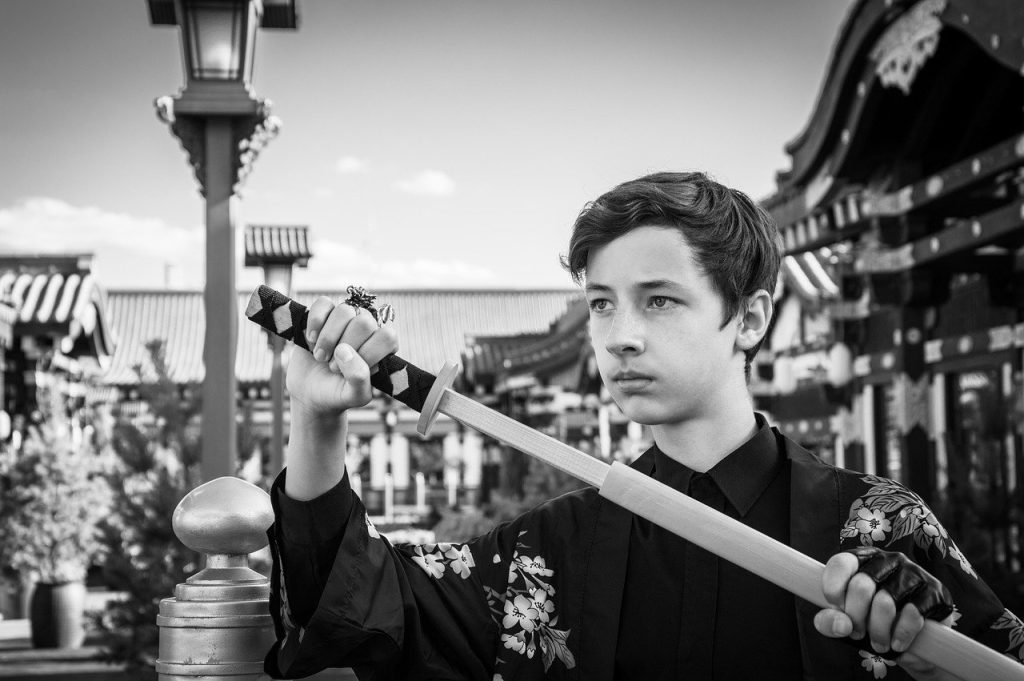The katana, the classical Japanese sword reputed for being as beautiful as it is deadly, has been and continues to be an important artifact in martial history. It had a long history in feudal Japan and was used by skillful samurai warriors.
Nowadays, the katana continues to influence martial arts practices across the globe. This article will examine how the katana has influenced modern martial arts, including its history, training use, and pop culture.
Let’s chat about this weapon’s legendary significance to martial arts today.
Table of Contents
Historical Significance
The katana has an enormously rich history, dating back to the medieval Japanese period when it was the samurai class’s main and most used weapon. It is often viewed as the embodiment of the samurai’s code of conduct, discipline, and combat excellence, as it is sharp, strong, and beautifully crafted.
During the war, its importance stemmed from the fact that it represented not only a martial art but also virtues like loyalty, bravery, and self-mastery.
Adaptation in Modern Martial Arts
In recent days, the essential philosophy of Japanese Samurai Sword usage has been employed by martial arts disciplines, both in Japan and in the whole world. Many Japanese martial arts institutes that teach katana skills, including Kendo, Iaido, and Kenjutsu, are devoted to katana mastery and its application.
Not only the skillful military techniques covered by these crafts but also the cultivation of mental discipline, religious values, and the highest moral code define the ideal ethos of samurai ways.
Influence on Western Martial Arts
The impact of katana wasn’t limited to Japan; it also took the form of a cultural export to other parts of the world, including Western martial arts. This tradition has played a key role in the resurgence of historical European fencing, sometimes called HEMA (Historical European Martial Arts), and many of its practitioners appreciate the underlying principles of katana work.
Although the arms or techniques may vary, the skill of timing, exactness, and continuous, flowing movement may be common to the disciplines associated with the katana traditions.
Popularity in Popular Culture
If anything, katana’s most favored status in martial arts has been brought to a very high level by its exposure in movies, TV, books, and games. Swords dangled in the hands of samurai, as well as contemporary sworders, are emblems of power, honor, and skill, and they represent stubbornness.
This widespread usage has resulted in the sword’s immediate presence and contributed to its enduring appeal and the integration of sword combat into the global martial arts world.
Contemporary Practice and Innovation
Nowadays, dagger mastery is practiced worldwide, but its practitioners are finding newer techniques, methodologies, and applications in the meantime.
Unlike traditional schools that respect traditions worth a millennium, modern schools and practitioners test the waters by fusing some katana fighting styles with other disciples or modern self-defense approaches.
Preservation of Tradition
Although modernization and globalization have extensively influenced the katana arts, many attempts are being made to preserve and promote the uptake of traditional swordsmanship art.
Martial arts associations, historical centers, and devoted adherents of the principles unite their efforts to preserve the katana’s ancient fighting techniques, horseback riding, and philosophy.
The katana is keeping up with the times through online katana for sale retailers, seminars, workshops, championships, and academic research, which has allowed the interest in its culture from then to prevail in today’s martial arts scenario.
Conclusion
Last, no one can deny the katana’s impact on modern martial arts. It has overshadowed both a nation and a race and persisted through many cultures.
Whether in traditional Japanese dojos or imported into the latest training methods, the martial art of katana perspective continues to fascinate and inspire martial artists worldwide. It still stands for the core principles of discipline, respect, and self-improvement.

